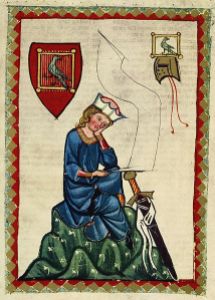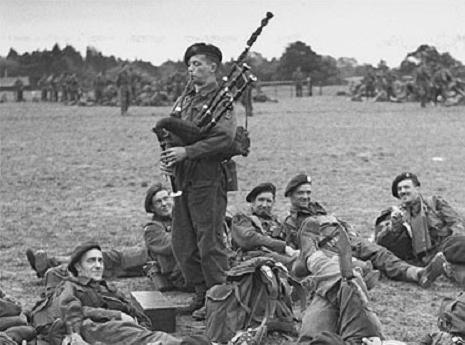
A bagpipe is an aerophone instrument with one or more sounding pipes, each with a single or double reed. The pipes are made to sound by air from a wind container in the form of a bag, which is pressurized by the arm of the player (usually the left one). The wind container is fed either directly from the player’s lungs via a blowpipe or indirectly via bellows. In many languages the bagpipe is simply referred to as a pipe, such as the northern Italian piva (pictured above), Celtic bagpipes such as pìob mhór (large pipe), or the Estonian torupill (reed pipe).
The origins of the bagpipe are largely unclear. Some have claimed that the instrument originates in western Asia, referencing similar instruments in Nebuchadnezzar‘s orchestra in ancient Babylon or mentioned by Aristophanes in Lysistrata (instruments with a wasp-like sound). Others have suggested that bagpipes originate in the hornpipes of North Africa and the Middle East—for instance, the Arabian instrument mizmār al-girāb, which dates to the 11th century.

European bagpipes were alluded to in texts as early as the 9th century, but certainly by beginning of the 12th century in German manuscripts. The earliest bagpipes typically consisted of a bladder made from whole sheepskin (or goatskin) cut, shaped, and sewn together. Iconographic representations of bagpipes became more common from the 13th century onward, and bagpipes were played in both court and urban areas of England, Ireland, Wales, France, and Germany.
Bagpipe Appreciation Day is on July 27, celebrate it by reading the entry on bagpipes in MGG Online.
Below are videos featuring performances by an ensemble featuring the Estonian torupill bagpipe and the Celtic pìob mhór by Ali Turner.
Related posts in Bibliolore:




